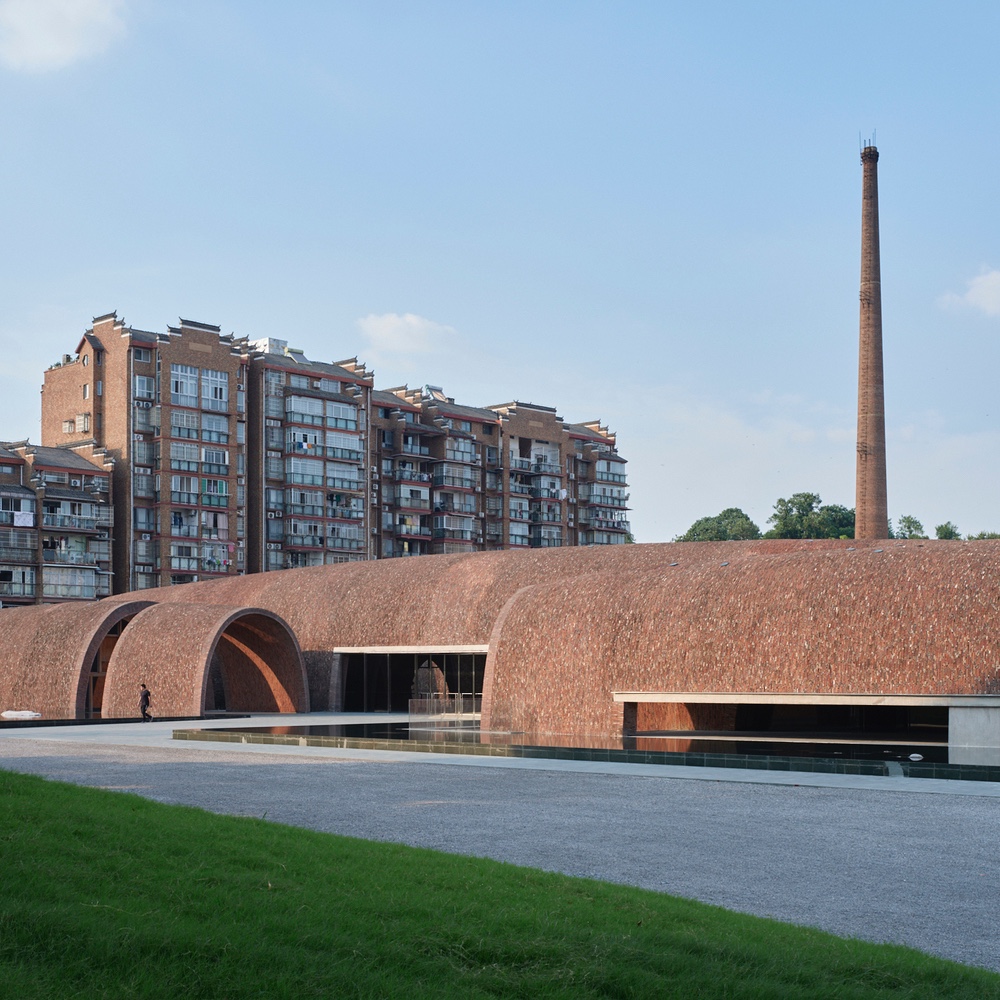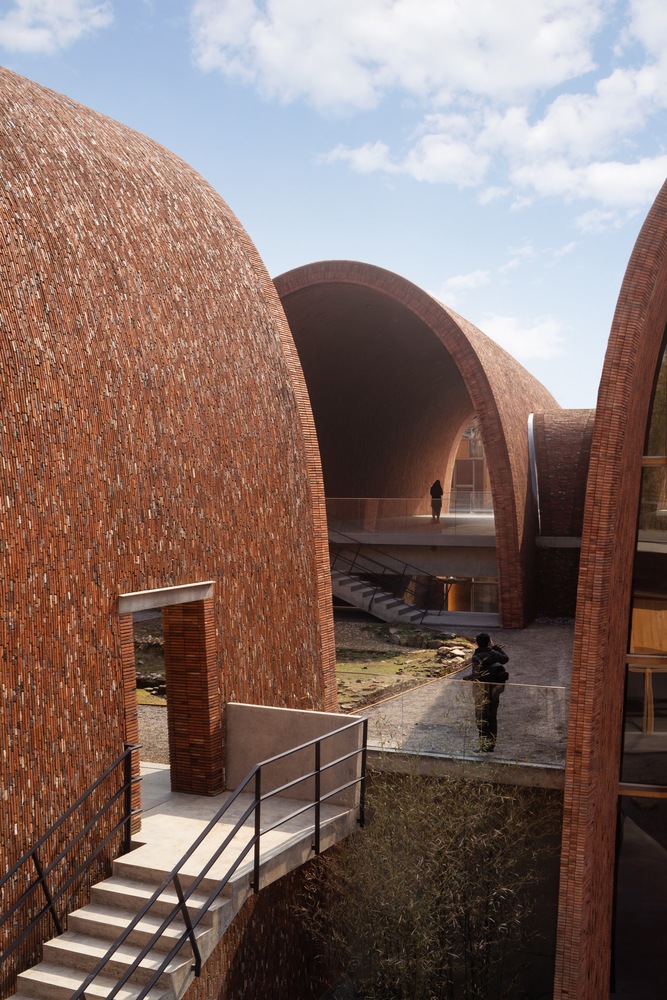Today, we want to show you a modern architecture project located in Jingdezhen, Jiangxi Province of China, which is known as the “Millennium porcelain Capital”. This project is Jingdezhen imperial Kiln Museum.



Context
Jingdezhen Imperial Kiln Museum is located in the center of the historic district of Jingdezhen. It is adjacent to the imperial kiln ruins from the Ming dynasty and Qing dynasty. As we all know, Jingdezhen was born from the kiln and became prosperous because of the porcelain. Those kilns are not only the origin of this city but also the local community’s way of living. More importantly, they are the blood of this city. Moreover, they are actually the source of inspiration for the architectural design of this museum.


Concept
Studio Zhu-Pei designed this imperial kiln museum. This modern architecture has two parts- above-ground and underground. The above-ground part comprises eight hyperboloid arch structures with different sizes built by workers with tiles.
Moreover, the museum blends in with its surroundings cleverly. And the newly discovered imperial kiln ruins were also included in the internal space of the museum.
In order to allow visitors to have the same space experience as the old craftsmen who made porcelain every day, the foyer is at the street level. In this way, every time when people enter the foyer, it is like a craftsman entering the kiln.



Inside structure
When walking into the building and turning left, visitors will start a wonderful journey of the kiln, porcelain, and human beings. From time to time, they walk through arched spaces with different sizes. Sometimes, they stroll from indoor to outdoor. After passing by the imperial kiln ruin from the Ming Dynasty, we arrive at the underground exhibition space.
The underground part of this modern architecture comprises five Jingdezhen imperial kiln sunken courtyards. Each courtyard has its own theme: gold, wood, water, fire, and soil. These five themes correspond to five elements respectively. They not only represent Chinese sage’s thinking on the laws of the universe but also closely connected to porcelain-making techniques. The architect hopes people can rediscover the “root” and “soul” of Jingdezhen through this modern architecture building.


If you turn right after entering the foyer, you will come across a bookstore, coffee shop, tea room and finally arrive at a semi-outdoor area under the arch. Here, people can sit relaxed on the ground and quietly appreciate and feel the historical air brought by the imperial kiln ruins.
Structure and materials of this architecture
It is worth mentioning the structure and materials of this modern architecture building. The ancient craftsmen used a special method to build the brick kiln without scaffolding. They also achieved a maximum interior space using the least possible material. Those brick kilns appeared in an organic mode, reflecting the heat flow from one end to the other. Inspired by this, the basic structure of the museum is an arched structure system. It was made by pouring concrete between two masonry walls.
The building materials of this museum are mainly bricks. They mixed the recycled old kiln bricks with the new ones to build the museum in order to demonstrate the local architectural culture. Because using old kiln bricks to build houses is a major feature in Jingdezhen. Furthermore, those kiln bricks must be demolished regularly every two or three years to ensure the thermal performance of the brick kiln.


Light in this modern architecture
The indoor natural lighting is achieved by skylights and sunken courtyards. Smoke hole of ancient brick kilns is the source of inspiration. Hollow cylindrical skylights are spread all over the arches. In the daytime, they can provide natural light and artificial light at night.
The Jingdezhen imperial kiln museum allows all visitors to have a 360-degree sensory experience through its unique architectural design, letting them be completely immersed in a journey that reflects the past, present , and nature.








